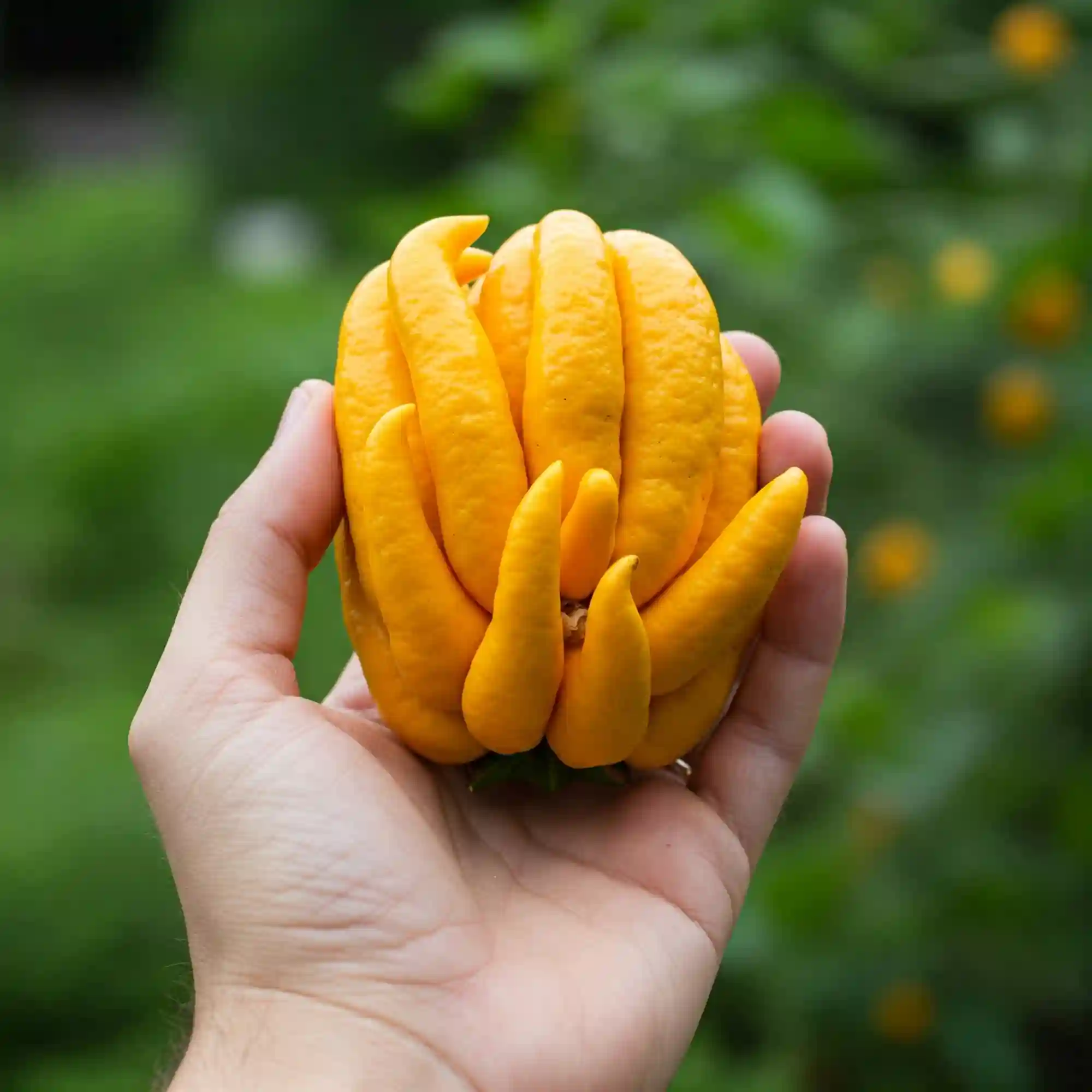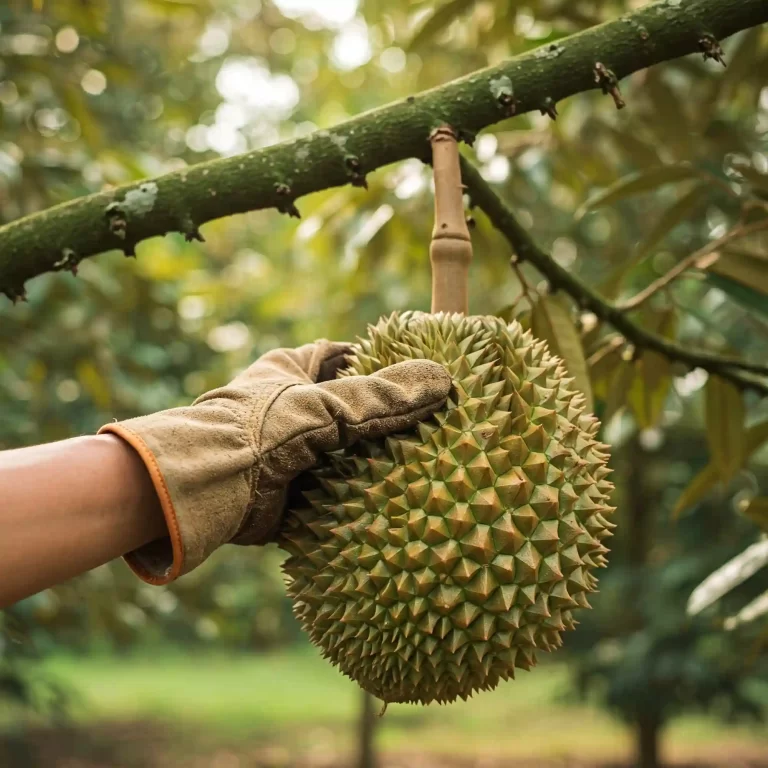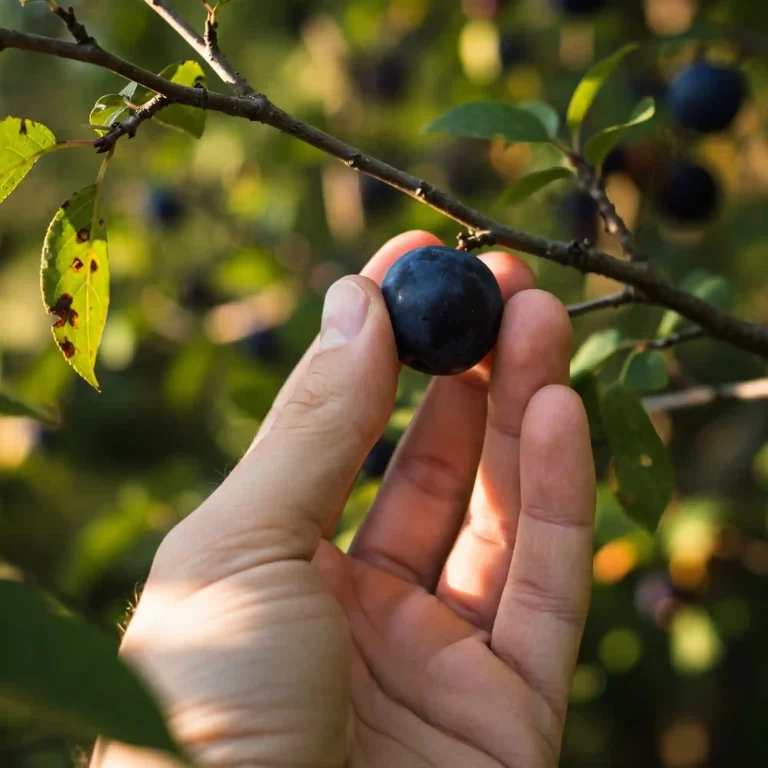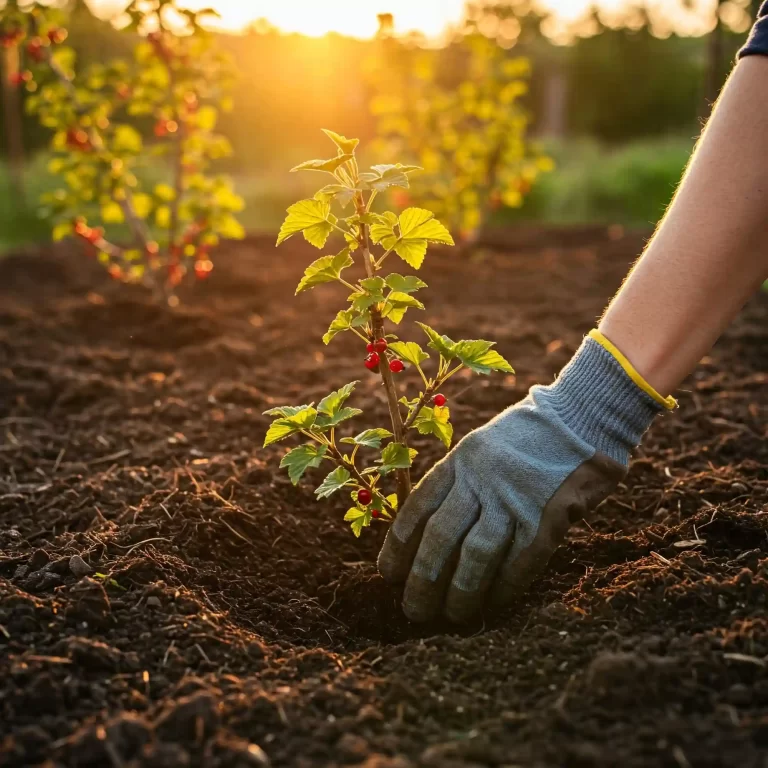Are you captivated by the unique, finger-like fruit of the Buddha’s Hand citron, yet daunted by the prospect of growing it? The challenge of cultivating this exotic citrus can seem overwhelming. You may dream of the fragrant zest and the striking ornamental appeal it brings, but fear the delicate balance required for its successful cultivation. Perhaps you’ve seen the intriguing, almost alien-like form of the fruit in markets or online and wondered, “Can I truly grow this at home?” You’re not alone. Many gardeners, like yourself, are drawn to the Buddha’s Hand for its novelty and aromatic allure, only to be met with a sense of uncertainty.
The reality is, while it demands specific conditions and attentive care, growing Buddha’s Hand is achievable. You just need the right guidance, the sort that cuts through the confusing jargon and gets straight to the practical steps. You need to know how to create the ideal environment, understand its unique needs, and troubleshoot common issues.
This guide isn’t about overwhelming you with botanical terms or complicated techniques. It’s about providing you with clear, actionable advice that I’ve gathered from my own experiences and the experiences of other successful growers. You’ll learn how to select the right location, prepare the soil, manage watering and feeding, and even propagate new trees.
By the end of this guide, you’ll feel confident in your ability to grow your own Buddha’s Hand. You’ll no longer be intimidated by its exotic reputation but instead, empowered by the knowledge that you can bring this remarkable citrus into your garden and enjoy its fragrant bounty. You’ll see that with a little patience and the right approach, growing Buddha’s Hand is not only possible, but incredibly rewarding.
Understanding Buddha’s Hand: The Basics
The Buddha’s Hand, scientifically known as Citrus medica var. sarcodactylis, is a fascinating cultivar of the citron, a citrus fruit with a long and storied history. Unlike typical citrus fruits, the Buddha’s Hand doesn’t produce a typical round fruit. Instead, it develops into a cluster of elongated, finger-like segments that can resemble a human hand, hence its name.
This unique fruit has been revered for centuries in various cultures. In Buddhism, it is often used as an offering due to its symbolic representation of the Buddha’s hand. In Chinese culture, it is believed to bring good luck and prosperity. Beyond its cultural significance, the Buddha’s Hand has culinary and medicinal uses. The peel is often candied or used to make preserves, while the zest adds a unique flavor and aroma to dishes.
The Buddha’s Hand is believed to have originated in Northeast India or Southeast Asia. It was later introduced to other parts of Asia, the Middle East, and eventually to Europe and the Americas. Today, it is cultivated in various regions with warm climates, including California, Florida, and parts of Asia.
The citron, the parent species of the Buddha’s Hand, is one of the earliest cultivated citrus fruits. It is mentioned in ancient texts dating back to the first millennium BC. The Buddha’s Hand, with its distinctive appearance, is thought to have arisen as a natural mutation of the citron.
While the Buddha’s Hand may not be as widely consumed as other citrus fruits like oranges or lemons, it is highly prized for its unique characteristics. The fruit itself is typically seedless and has a thick, aromatic rind. The pulp, while present, is often dry and not commonly eaten. The primary use of the Buddha’s Hand is for its fragrant peel, which is used in various culinary and ornamental applications.
Planting Your Buddha’s Hand Tree
The best time to plant a Buddha’s Hand tree is during the spring or early summer when the weather is warm and the tree is actively growing. If you are planting a bare-root tree, soak the roots in water for a few hours before planting. This will help to rehydrate the roots and ensure they establish themselves well in the new soil.
Carefully place the tree in the planting hole, ensuring that the root ball is level with the surrounding soil. Avoid planting the tree too deeply, as this can lead to root rot. Backfill the hole with the amended soil, gently firming it around the roots to eliminate air pockets. Avoid compacting the soil too tightly, as this can restrict root growth.
Proper spacing is essential for healthy growth and fruit production. Plant your Buddha’s Hand tree at least 10-15 feet away from other trees and structures to allow for adequate air circulation and sunlight penetration. This spacing will also prevent competition for water and nutrients.
If you have limited space, you can also grow Buddha’s Hand in containers. Choose a large, well-draining container with drainage holes. Use a high-quality potting mix that is specifically formulated for citrus trees. Follow the same planting instructions as for planting in the ground, but be sure to water regularly and fertilize appropriately.
Caring for Your Buddha’s Hand Tree
Caring for your Buddha’s Hand tree involves a few key practices to ensure its health and productivity. Consistent watering, proper fertilization, and regular pruning are essential for optimal growth and fruit production.
Watering:
Water your Buddha’s Hand tree regularly, especially during dry periods. Deep watering is more effective than frequent shallow watering, as it encourages deep root growth. Aim to water deeply and thoroughly, allowing the water to penetrate the root zone. However, avoid overwatering, as this can lead to root rot. Allow the top few inches of soil to dry out between waterings. During the winter months, reduce watering frequency as the tree goes dormant.
Fertilizing:
Fertilizing your Buddha’s Hand tree is essential for healthy growth and fruit production. Use a balanced citrus fertilizer formulated for use on acid-loving plants. Apply fertilizer according to the manufacturer’s instructions, typically during the spring and summer months when the tree is actively growing. Avoid fertilizing during the winter months when the tree is dormant. Over-fertilization can lead to excessive vegetative growth at the expense of fruit production.
Pruning:
Pruning your Buddha’s Hand tree is important to maintain its shape, encourage new growth, and improve air circulation. Prune lightly during the dormant season to remove any dead, damaged, or crossing branches. You can also shape the tree to your desired form by selectively pruning branches. However, avoid heavy pruning, as this can stress the tree and reduce fruit production.
Pest and Disease Control:
Buddha’s Hand trees can be susceptible to various pests and diseases, including citrus canker, scale insects, and aphids. Regularly inspect your tree for signs of infestation or disease. Monitor the leaves, branches, and fruit for any unusual spots, discoloration, or insect activity.
If you notice any signs of pests, take appropriate action to treat the issue promptly. You can use insecticidal soap or horticultural oil to control aphids and scale insects. For more severe infestations, consult with a local agricultural extension agent or a certified arborist for advice on appropriate pest control methods.
Harvesting and Using Your Buddha’s Hand Fruit
Buddha’s Hand fruit typically ripens in the fall or winter, depending on your climate. The fruit will turn a bright yellow color when ripe. You can also tell if the fruit is ripe by gently pressing on the rind; it should yield slightly to the touch. Avoid harvesting fruit that is still green, as it will not be as flavorful or aromatic.
Harvest the fruit by cutting the stem with clean, sharp shears. Avoid pulling or twisting the fruit, as this can damage the tree and reduce future fruit production. Handle the fruit carefully to avoid bruising, which can shorten its shelf life.
Buddha’s Hand fruit can be enjoyed in a variety of ways. The peel is often candied and used as a decorative element in desserts or as a unique snack. The process of candying involves simmering the peel in a sugar syrup until it becomes translucent and chewy. Candied Buddha’s Hand peel makes a beautiful and unusual garnish for cakes, cookies, and other desserts.
The zest of the Buddha’s Hand can be used to add a distinctive flavor and aroma to dishes such as salads, marinades, and desserts. The zest can be grated or finely chopped and added to dishes for a unique citrus flavor. The juice of the Buddha’s Hand, while not as abundant as other citrus fruits, can also be used in cooking and cocktails.
While the pulp of the Buddha’s Hand is not typically eaten, it can be used to make jams or jellies. The pulp is often quite dry and fibrous, but it can add a unique flavor and texture to these preserves.
Propagating Your Buddha’s Hand Tree
You can propagate Buddha’s Hand trees using several methods, including grafting and air layering. Grafting is a common method used to propagate citrus trees. It involves attaching a scion (a cutting from a desired variety) to a rootstock. This method is often used to propagate specific varieties of Buddha’s Hand or to introduce disease resistance.
Air layering is another method of propagation that can be successful for Buddha’s Hand trees. It involves encouraging a branch to root while still attached to the parent plant. This method is relatively simple and can be done even if you don’t have extensive gardening experience.
Grafting:
- Select a scion: Choose a healthy, disease-free branch from a desired Buddha’s Hand variety. The scion should be about 6-8 inches long and have several buds.
- Prepare the rootstock: Select a healthy rootstock, which can be another citrus variety such as sour orange or trifoliate orange. The rootstock should be about the same diameter as the scion.
- Make the grafts: Make a diagonal cut on the scion and the rootstock. The cuts should be angled and fit together snugly.
- Secure the graft: Tie the scion and rootstock together tightly with grafting tape or rubber bands.
- Protect the graft: Cover the graft with grafting wax to prevent moisture loss and infection.
- Monitor the graft: Keep the graft union moist and protect it from extreme temperatures.
Air Layering:
- Select a branch: Choose a healthy, one-year-old branch that is about 1/2 inch in diameter.
- Girdling the branch: Remove a ring of bark from the branch, about 1-2 inches wide.
- Apply rooting hormone: Apply rooting hormone powder to the exposed area of the branch.
- Wrap the branch: Wrap the girdled area with moist sphagnum moss and secure it with plastic wrap.
- Monitor the branch: Keep the moss moist and check regularly for root development.
- Sever the branch: Once roots have formed, sever the branch below the rooted area and pot it up.
Troubleshooting Common Problems
While relatively easy to care for, Buddha’s Hand trees can be affected by several common problems. One of the most significant issues is root rot, which occurs when the soil remains too wet. To prevent root rot, ensure your tree is planted in well-drained soil and avoid overwatering.
Citrus canker is a bacterial disease that can cause leaf spots, fruit blemishes, and even tree death. If you suspect your tree has citrus canker, consult with a local agricultural extension agent or a certified arborist for proper diagnosis and treatment.
Pests such as scale insects and aphids can also infest Buddha’s Hand trees. These pests can suck the sap from the tree, weakening it and reducing its overall health. Monitor your tree regularly for signs of infestation, such as sticky residue on the leaves or the presence of small, white bumps. If you notice any signs of pests, take appropriate action to treat the issue promptly. You can use insecticidal soap or horticultural oil to control aphids and scale insects. For more severe infestations, consult with a local agricultural extension agent or a certified arborist for advice on appropriate pest control methods.
Nutritional deficiencies can also affect the health of your Buddha’s Hand tree. If your tree shows signs of yellowing leaves or stunted growth, it may be experiencing a nutrient deficiency. A soil test can help determine if your soil is lacking in essential nutrients. If necessary, you can amend the soil with appropriate fertilizers to correct any deficiencies.
Frequently Asked Questions (FAQs)
Here are answers to some of the most common questions about growing Buddha’s Hand:
What is the best soil for growing Buddha’s Hand fruits?
Buddha’s Hand trees thrive in well-drained, slightly acidic soil with a pH of around 6.0-7.0. A sandy loam soil is ideal, as it provides good drainage and aeration. Avoid planting in heavy clay soils that retain too much moisture, as this can lead to root rot.
How to properly prune a Buddha’s Hand fingered citron tree?
Prune your Buddha’s Hand tree lightly during the dormant season to remove any dead, damaged, or crossing branches. You can also shape the tree to your desired form by selectively pruning branches. However, avoid heavy pruning, as this can stress the tree and reduce fruit production.
Where can I find organic fertilizer for Buddha’s Hand citrus?
Organic fertilizers specifically formulated for citrus trees are available at most garden centers and online retailers. Look for fertilizers that are rich in nitrogen, phosphorus, and potassium, which are essential nutrients for healthy growth and fruit production.
What are the ideal temperature conditions to grow Buddha’s Hand?
Buddha’s Hand trees thrive in warm, subtropical climates. They require a minimum of 6-8 hours of direct sunlight per day and temperatures between 60-80°F (15-27°C). They can tolerate short periods of cooler temperatures, but prolonged exposure to frost can damage or kill the tree.
How do I protect Buddha’s Hand from common citrus pests?
Regularly inspect your tree for signs of pests such as scale insects and aphids. You can use insecticidal soap or horticultural oil to control these pests. For more severe infestations, consult with a local agricultural extension agent or a certified arborist for advice on appropriate pest control methods.
When is the best time to harvest Buddha’s Hand citron fruits?
Buddha’s Hand fruit typically ripens in the fall or winter. The fruit will turn a bright yellow color when ripe. You can also tell if the fruit is ripe by gently pressing on the rind; it should yield slightly to the touch.
What are the steps to growing Buddha’s Hand in containers?
- Choose a large, well-draining container with drainage holes.
- Use a high-quality potting mix that is specifically formulated for citrus trees.
- Plant your Buddha’s Hand tree in the container, following the same planting instructions as for planting in the ground.
- Water regularly and fertilize appropriately.
- Protect the tree from extreme temperatures and cold weather.
How to propagate Buddha’s Hand from cuttings or grafting?
Grafting:
- Select a healthy scion (a cutting from a desired variety) and a compatible rootstock.
- Make angled cuts on the scion and rootstock.
- Join the scion and rootstock together tightly.
- Secure the graft with grafting tape or rubber bands.
- Cover the graft with grafting wax to prevent moisture loss and infection.
Air Layering:
- Select a healthy branch on the Buddha’s Hand tree.
- Remove a ring of bark from the branch.
- Apply rooting hormone to the exposed area.
- Wrap the branch with moist sphagnum moss and secure it with plastic wrap.
- Once roots have formed, sever the branch below the rooted area and pot it up.
What are the signs of disease in a Buddha’s Hand fruit tree?
Signs of disease in a Buddha’s Hand tree include:
- Yellowing or browning leaves
- Leaf spots
- Fruit blemishes
- Stunted growth
- Dieback of branches
If you suspect your tree is diseased, consult with a local agricultural extension agent or a certified arborist for proper diagnosis and treatment.
How much sunlight does a Buddha’s Hand plant need to thrive?
Buddha’s Hand trees require at least 6-8 hours of direct sunlight per day to produce healthy fruit. While they can tolerate some shade, prolonged periods in shade will result in reduced fruit production and smaller, less flavorful fruit.
Conclusion
Growing Buddha’s Hand can be a rewarding experience, but it requires patience and attention to detail. By following these tips and providing your tree with the proper care, you can successfully cultivate this unique and fascinating citrus fruit. Remember to choose a sunny location, provide well-drained soil, and water and fertilize your tree regularly. Monitor your tree for pests and diseases, and take appropriate action to address any issues. With proper care, your Buddha’s Hand tree will thrive and reward you with beautiful, fragrant fruit for years to come.
I encourage you to share your experiences growing Buddha’s Hand. If you have any questions or encounter any challenges, feel free to leave a comment below. Happy gardening!




